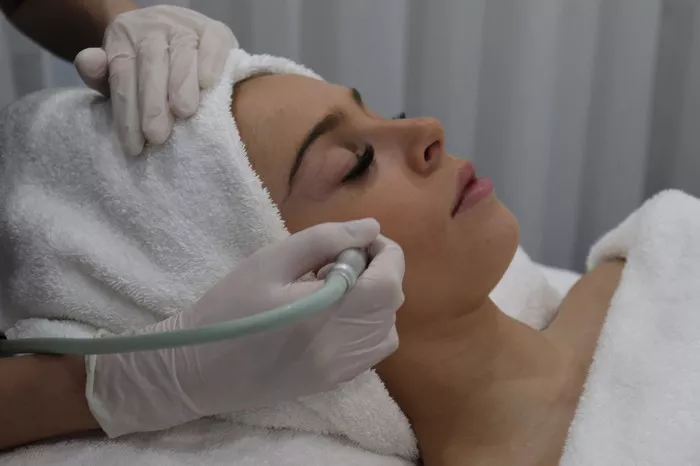Peach fuzz, the fine, soft hair that often covers the face, is a natural feature of the skin for many individuals. While some embrace it as part of their natural beauty, others may choose to remove it for various reasons. However, a common concern among those considering peach fuzz removal is the potential for stubble. In this comprehensive guide, we will explore the intricacies of peach fuzz removal, the factors influencing the presence of stubble, and how to achieve smooth, hair-free skin without unwanted side effects.
Understanding Peach Fuzz
1.1. What Is Peach Fuzz?
Peach fuzz, medically known as vellus hair, is the soft, fine hair that covers various parts of the body, including the face. It is typically light in color and texture and differs from terminal hair, which is thicker and coarser, such as the hair on the scalp or eyebrows. Peach fuzz serves several purposes, including protecting the skin and assisting with the regulation of body temperature.
1.2. Why Remove Peach Fuzz?
Individuals choose to remove peach fuzz for a variety of reasons:
Cosmetic Reasons: Some people prefer the appearance of smooth, hair-free skin and find that peach fuzz can affect the application of makeup and the overall look of the skin.
Makeup Application: Makeup enthusiasts often prefer to have a smooth canvas for foundation and concealer, as peach fuzz can make makeup appear less even.
Skincare Benefits: Removing peach fuzz can enhance the absorption of skincare products, allowing them to penetrate the skin more effectively.
Medical Procedures: In some cases, medical procedures or aesthetic treatments like laser hair removal or chemical peels may necessitate the removal of peach fuzz.
Methods of Peach Fuzz Removal
2.1. Shaving
Shaving is a common and accessible method for removing peach fuzz. It involves using a razor or a specialized facial razor to trim the hair at the skin’s surface. Contrary to a common myth, shaving does not make hair grow back thicker or darker; it simply removes the visible part of the hair.
2.2. Waxing
Waxing involves applying hot or cold wax to the skin and then removing it quickly to pull out the hair from the root. This method typically provides longer-lasting results compared to shaving.
2.3. Tweezing
Tweezing involves using a pair of tweezers to pluck individual hairs from the skin. It is suitable for smaller areas or precision work but can be time-consuming for larger areas.
2.4. Depilatory Creams
Depilatory creams contain chemicals that break down the hair structure, allowing it to be wiped away. These creams can be applied to larger areas and are relatively painless.
2.5. Dermaplaning
Dermaplaning is a cosmetic procedure performed by a skincare professional. It involves using a scalpel-like tool to gently scrape off the top layer of skin and peach fuzz. This method provides exfoliation benefits in addition to hair removal.
2.6. Laser Hair Removal
Laser hair removal is a semi-permanent method that uses focused laser energy to target and destroy hair follicles. It can significantly reduce the regrowth of peach fuzz over time but typically requires multiple sessions.
Does Peach Fuzz Removal Cause Stubble?
3.1. Shaving and Stubble
Shaving is a method commonly associated with the potential for stubble. When you shave, you cut the hair at the skin’s surface, leaving the hair with a blunt edge. As the hair begins to grow back, it may feel coarser and appear as stubble. However, it’s important to note that this stubble is not caused by the hair regrowth itself but rather by the blunt edges of the cut hair.
3.2. Other Methods and Stubble
Waxing, tweezing, and depilatory creams typically result in smoother skin after hair removal because they remove the hair from the root. These methods do not lead to stubble, as the hair regrows with a tapered edge.
3.3. Preventing Stubble after Shaving
To minimize the appearance of stubble after shaving, consider the following tips:
Use a Sharp Razor: A dull blade can lead to a rougher shave and more noticeable stubble. Replace your razor regularly.
Shave in the Direction of Hair Growth: Shaving against the grain can result in a closer shave, but it may also increase the likelihood of stubble. Shaving in the direction of hair growth can reduce this effect.
Exfoliate Before Shaving: Gently exfoliating your skin before shaving can help prevent ingrown hairs, which can contribute to stubble.
Moisturize After Shaving: Applying a hydrating moisturizer after shaving can help keep the skin soft and smooth.
Conclusion
In conclusion, the presence of stubble after peach fuzz removal largely depends on the method chosen for hair removal. Shaving is a method that can lead to stubble because it cuts the hair at the skin’s surface, leaving blunt edges. Other methods such as waxing, tweezing, and depilatory creams typically result in smoother skin as they remove the hair from the root.
It’s essential to choose a hair removal method that aligns with your preferences and skin type. If you opt for shaving and want to minimize the appearance of stubble, following proper shaving techniques and aftercare can help achieve smoother results.
Ultimately, the decision to remove peach fuzz and whether or not to accept the possibility of stubble is a personal one. What matters most is that you choose a method that makes you feel comfortable and confident in your skin.


